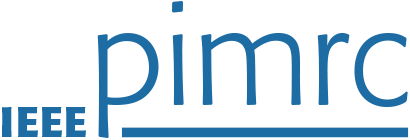Lecturers
Dr. Galati-Giordano Lorenzo (Nokia Bell Labs, Germany)
Lorenzo Galati-Giordano (SM’20) is Senior Research Scientist at Nokia Bell Labs since 2015. His current focus is on future indoor networks and next generation Wi-Fi technologies, an area where he is contributing to the ongoing IEEE 802.11be standardization with pioneering works on large antenna arrays solutions for the unlicensed spectrum and receiving international attention from the press. He received the M.Sc. and the Ph.D. degrees in wireless communication from Politecnico di Milano, Italy, in 2005 and 2010, respectively, and the master’s degree in Innovation Management from IlSole24Ore Business School, Italy, in 2014. He was also an R&D Engineer for Azcom Technology, an Italian SME, from 2010 to 2014. Lorenzo has more than 10 years of academic and industrial research experience on wireless communication systems and protocols, co-authored 20+ commercial patents, 30+ publications in prestigious books, IEEE journals and conferences, and 10+ standard contributions in the IEEE 802.11be.
Prof. Boris Bellalta (Universitat Pompeu Fabra, Spain)
Boris Bellalta (SM’13) is a Full Professor at Universitat Pompeu Fabra (UPF), where he heads the Wireless Networking group. His research interests are in the area of wireless networks and performance evaluation, with emphasis on Wi-Fi technologies, machine learning, and resource management. His recent works on spatial reuse, spectrum aggregation, txop sharing and multi-link operation for next-generation Wi-Fi have received special attention from the research community and industry. He is currently involved as principal investigator in several EU, national and industry funded research projects that aim to push forward our understanding of complex wireless systems. The results from his research have been published in 150+ international journal and conference papers. He has supervised 11 PhD students.
Prof. Giovanni Geraci (Universitat Pompeu Fabra, Spain)
Giovanni Geraci (SM’19) is an Assistant Professor at Universitat Pompeu Fabra in Barcelona. He was previously a Research Scientist with Nokia Bell Labs and holds a Ph.D. from the UNSW Sydney. He serves as a Distinguished Lecturer for the IEEE ComSoc and the IEEE VTS and as an Editor for the IEEE TWC and IEEE COMML. He has been delivering over 20 IEEE ComSoc tutorials, keynotes, and industry seminars—many of which on Wi-Fi and unlicensed spectrum technologies—and frequently gives invited lectures at prestigious industrial, governmental, and academic institutions. He has co-authored 60+ IEEE publications with 2500+ citations and is co-inventor of a dozen patent families on wireless communications and networking. He was the recipient of the IEEE PIMRC’19 Best Paper Award and of the IEEE ComSoc Outstanding Young Researcher Award for Europe, Middle East & Africa.
Abstract
In this tutorial, we will provide the research community with fresh updates on next-generation Wi-Fi, directly from the IEEE 802.11 standardization meetings. The key features of Wi-Fi 7 are currently being shaped, with the second draft of the 802.11be standard expected in spring 2022. Meanwhile, a new 802.11 Study Group will be formed in July 2022 to set objectives and timeline for a beyond-802.11be amendment, i.e., the one to be certified as Wi-Fi 8.
Motivation and Context
What will Wi-Fi be in 2030? As hordes of data-hungry devices challenge its current capabilities, the IEEE strikes again with 802.11be, alias Wi-Fi 7. This brand-new amendment promises a (r)evolution of unlicensed wireless connectivity as we know it, unlocking access to gigabit, reliable and low-latency communications, and reinventing manufacturing and social interaction through digital augmentation. More than that, time-sensitive networking protocols are being put forth with the overarching goal of making wireless the new wired. With the 802.11be standardization process being consolidated and that of its successor about to kick off, we will shed light on what to expect from Wi-Fi in the next decade, placing the spotlight on the must-have features for critical and delay-sensitive applications, and illustrating their benefits through tangible performance results.
Structure and Content
In this tutorial, we will provide the research community with fresh updates on next-generation Wi-Fi, directly from the IEEE 802.11 standardization meetings. The key features of Wi-Fi 7 are currently being shaped, with the second draft of the 802.11be standard expected in spring 2022. Meanwhile, a new 802.11 Study Group will be formed in July 2022 to set objectives and timeline for a beyond-802.11be amendment, i.e., the one to be certified as Wi-Fi 8. Therefore, IEEE PIMRC 2022, taking place in Fall 2022, is the perfect venue to provide a digested summary of Wi-Fi’s present and future developments. This tutorial will attract a diverse group of attendees, comprising industrial and academic researchers as well as engineers interested in advancing their understanding of Wi-Fi. The speakers’ international reputation and network of collaborations will guarantee maximum attendance.
Part I: Objective and timeline of next-generation Wi-Fi (20min)
- 802.11be objectives: Extremely high throughput, low latency, and compatibility
- 802.11be updated standardization timeline, spectrum regulations, and certifications
- Overview of 802.11be candidate features and disruptive solutions
Part II: Wi-Fi 7 — New features and operation in the 6 GHz band (50min)
- PHY enhancements: 320 MHz bandwidth, efficient use of non-contiguous spectrum, 4K QAM
- Wideband access: Enhanced OFDMA and multiple resource units per STA
- TXOP sharing for direct station-to-station communications
- MIMO Enhancements: Upgraded number of spatial streams, implicit channel sounding procedure
- Multi-band/multi-channel aggregation and operation
Part III: Wi-Fi 7 & beyond — Advanced features and low-latency enhancements (50min)
- Enhanced link adaptation and HARQ retransmission protocol
- Low-complexity AP coordination, coordinated OFDMA, power-domain coordinated spatial reuse
- Advanced AP coordination, coordinated beamforming and null steering, distributed MIMO
- Delay/time-sensitive networking opportunities for low-latency real-time traffic
- A sneak peek beyond 802.11be: What will Wi-Fi 8 be?
Part IV: Wi-Fi 7 and beyond — Performance evaluation (40min)
- Delay performance of multi-link operations in a sold-out football stadium
- Delay performance of coordinated beamforming in an indoor enterprise scenario
Part V: Conclusions and Q&A (20min)
- Summary, takeaways, and future research directions


